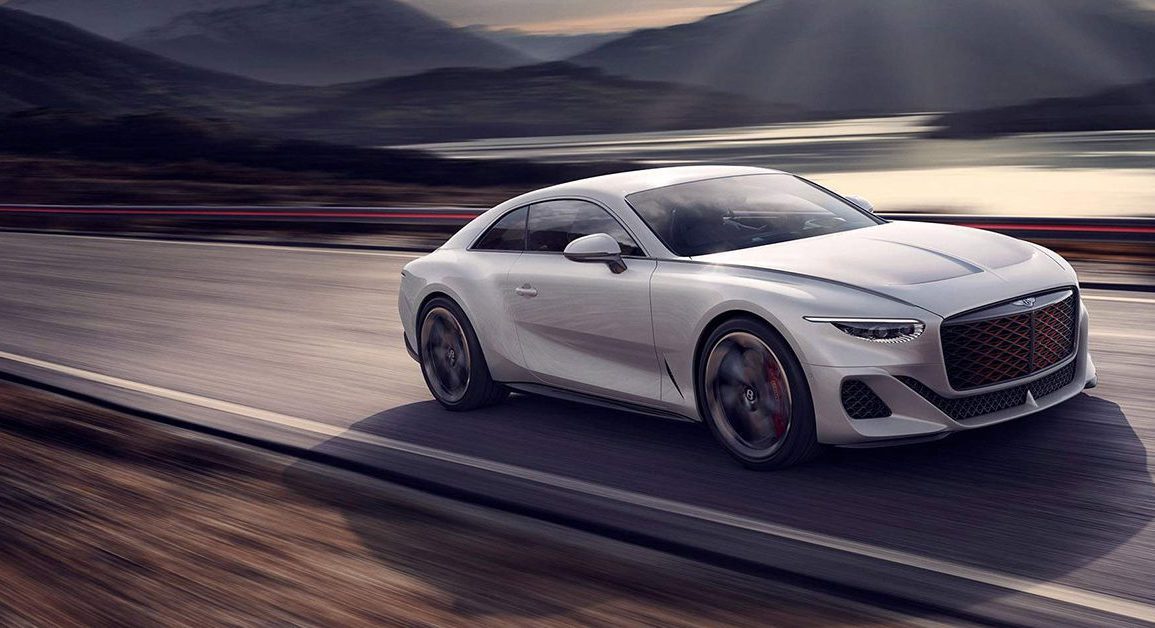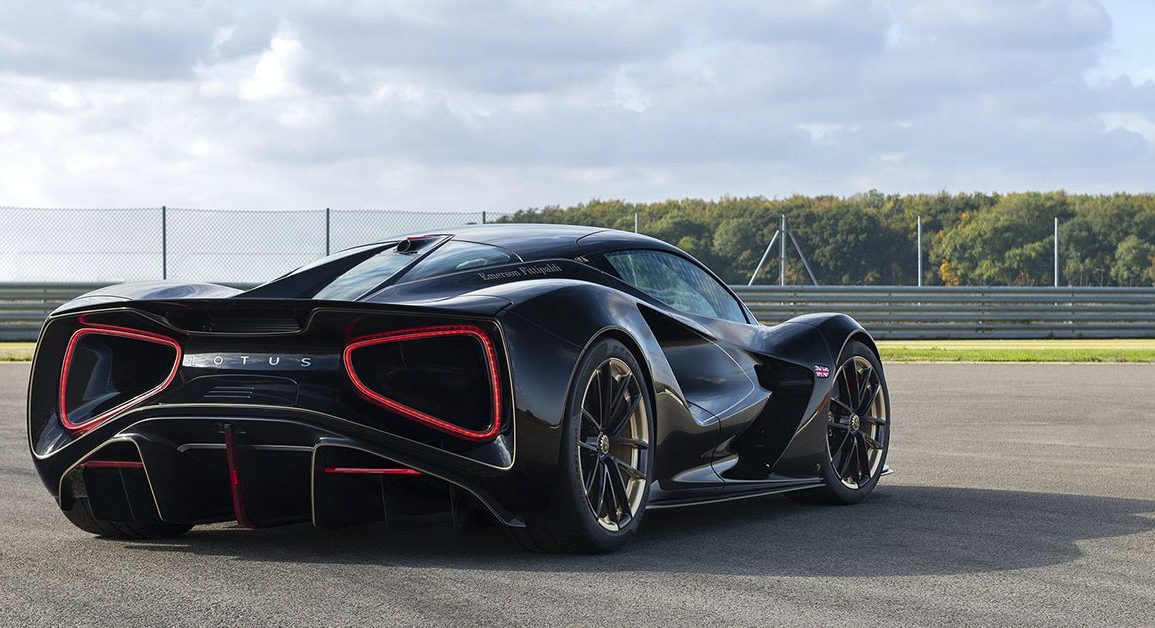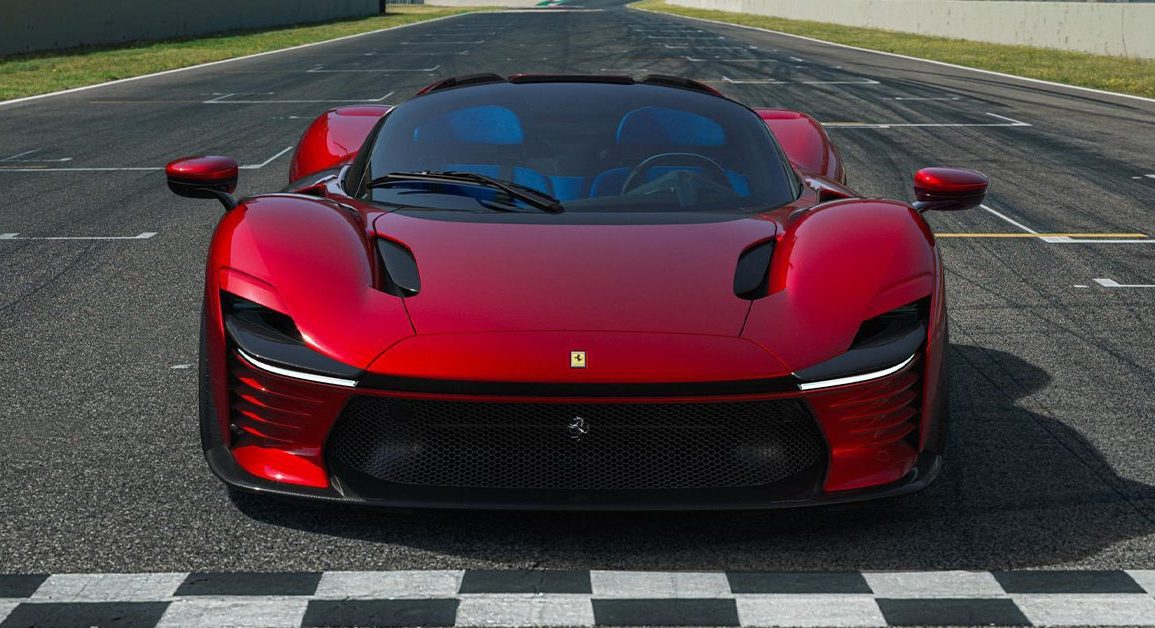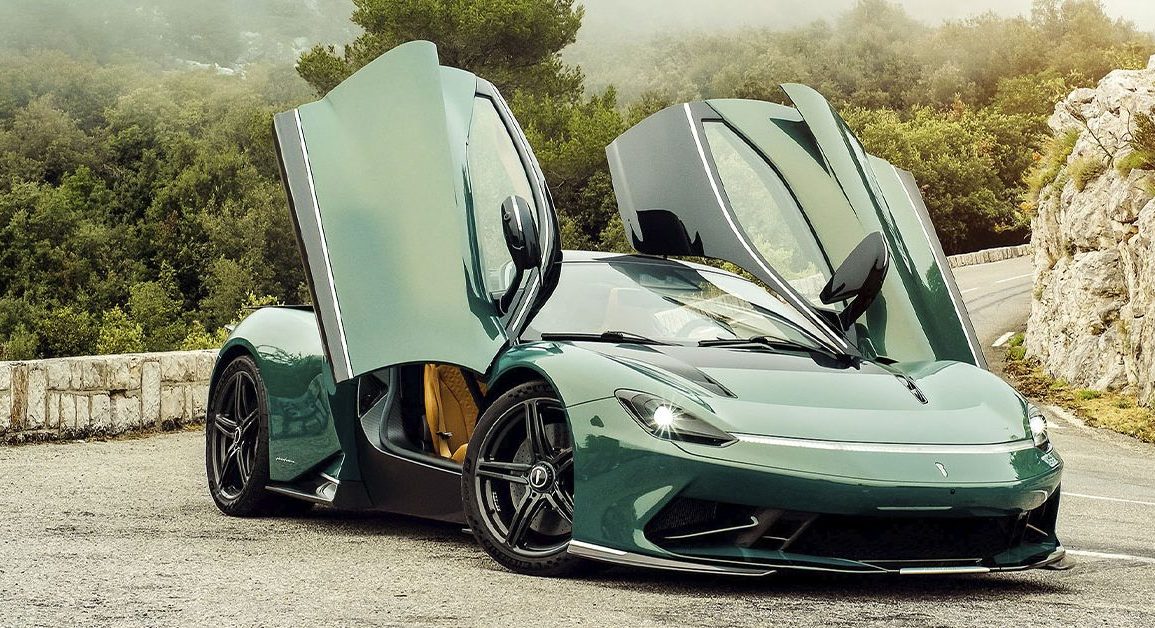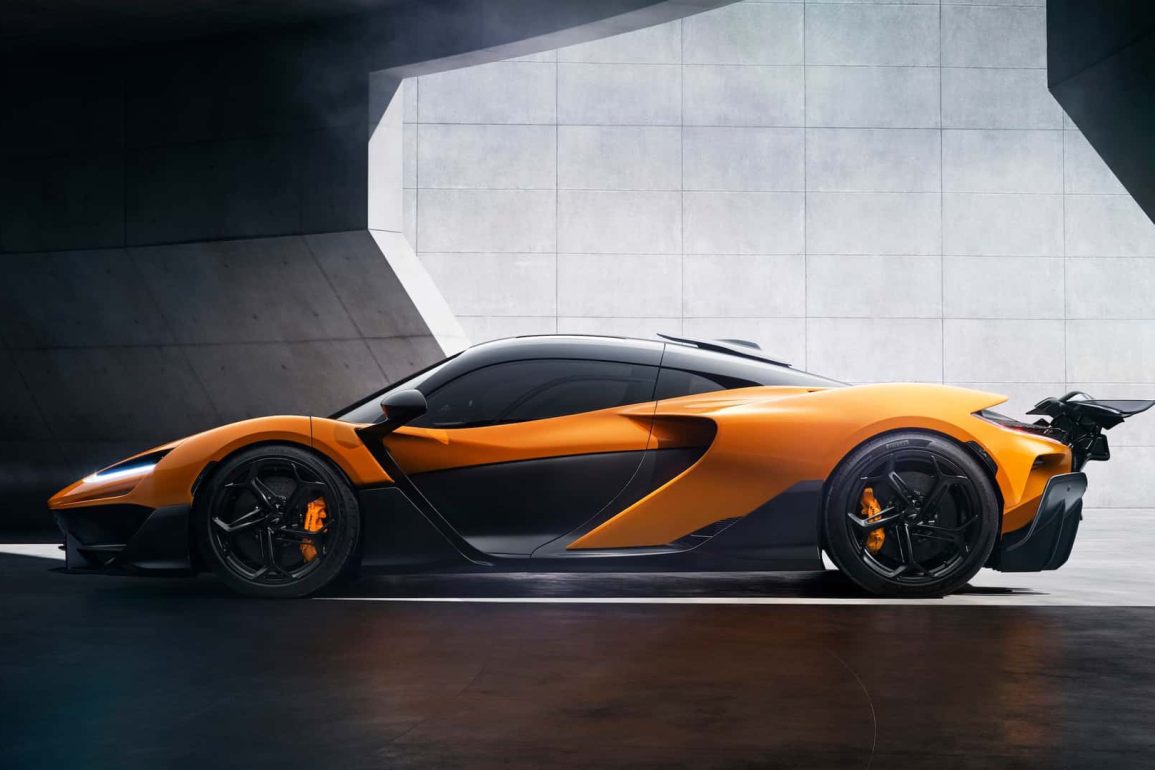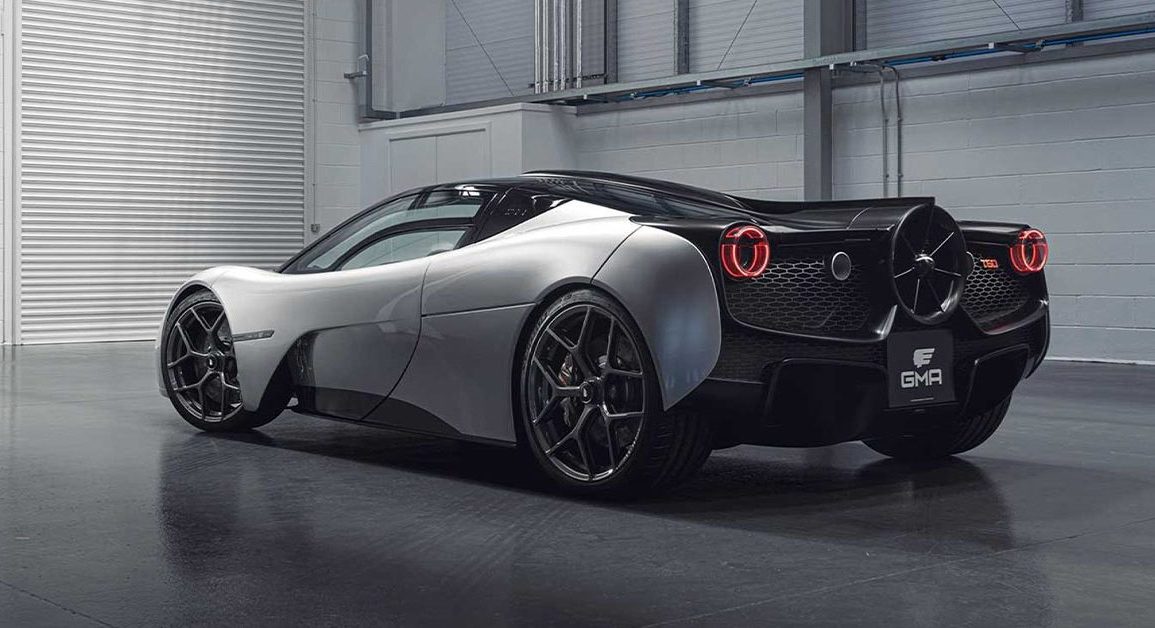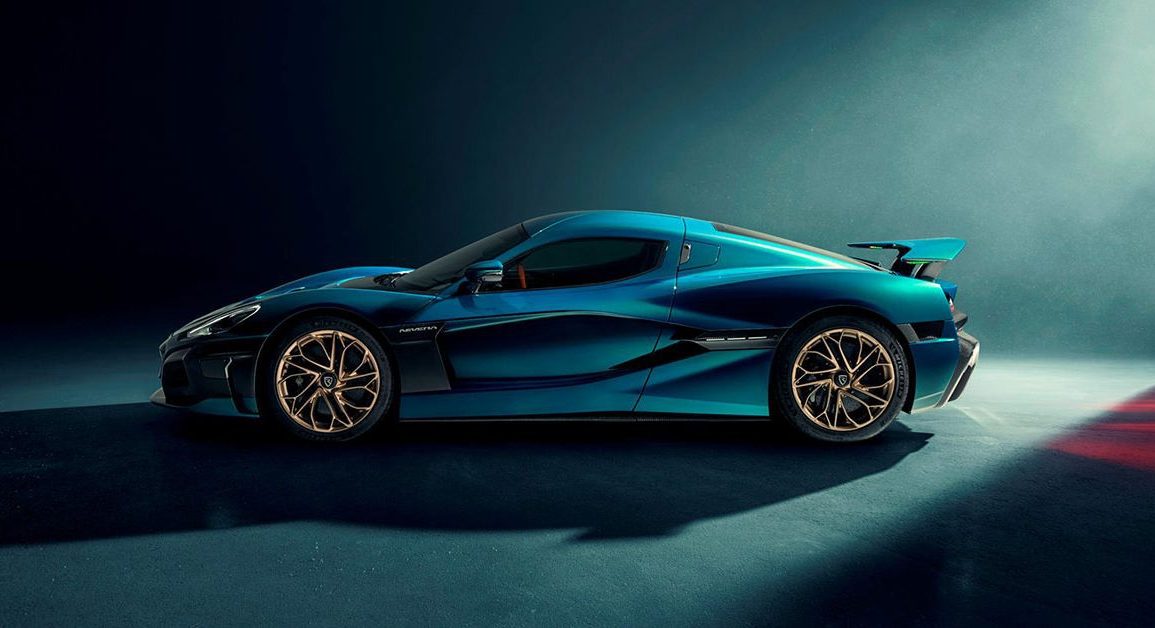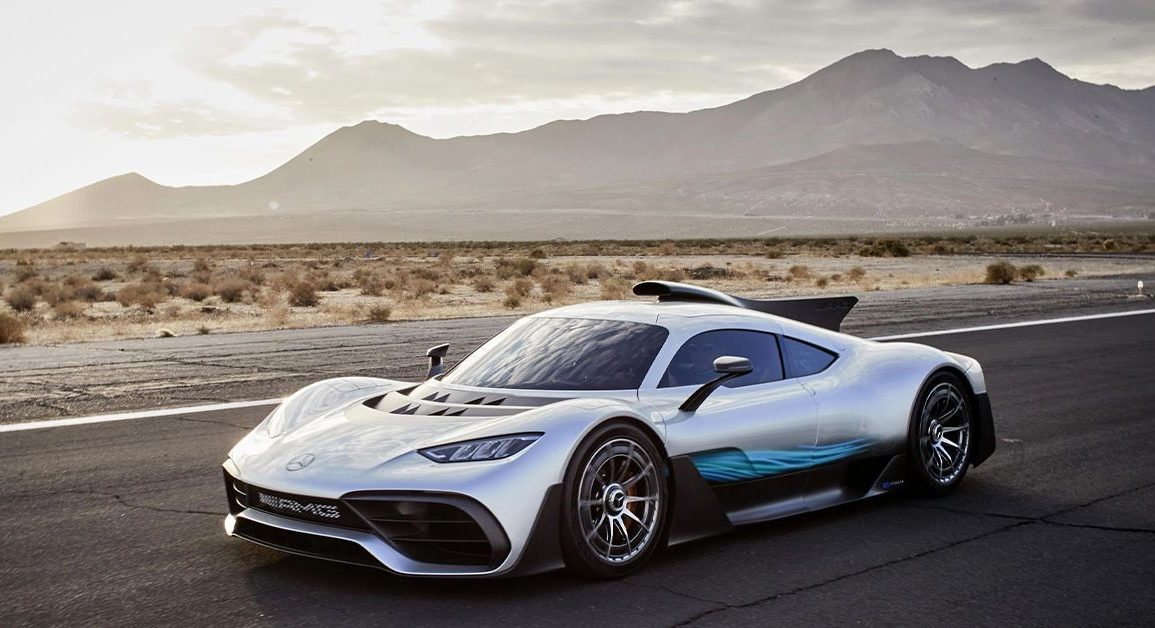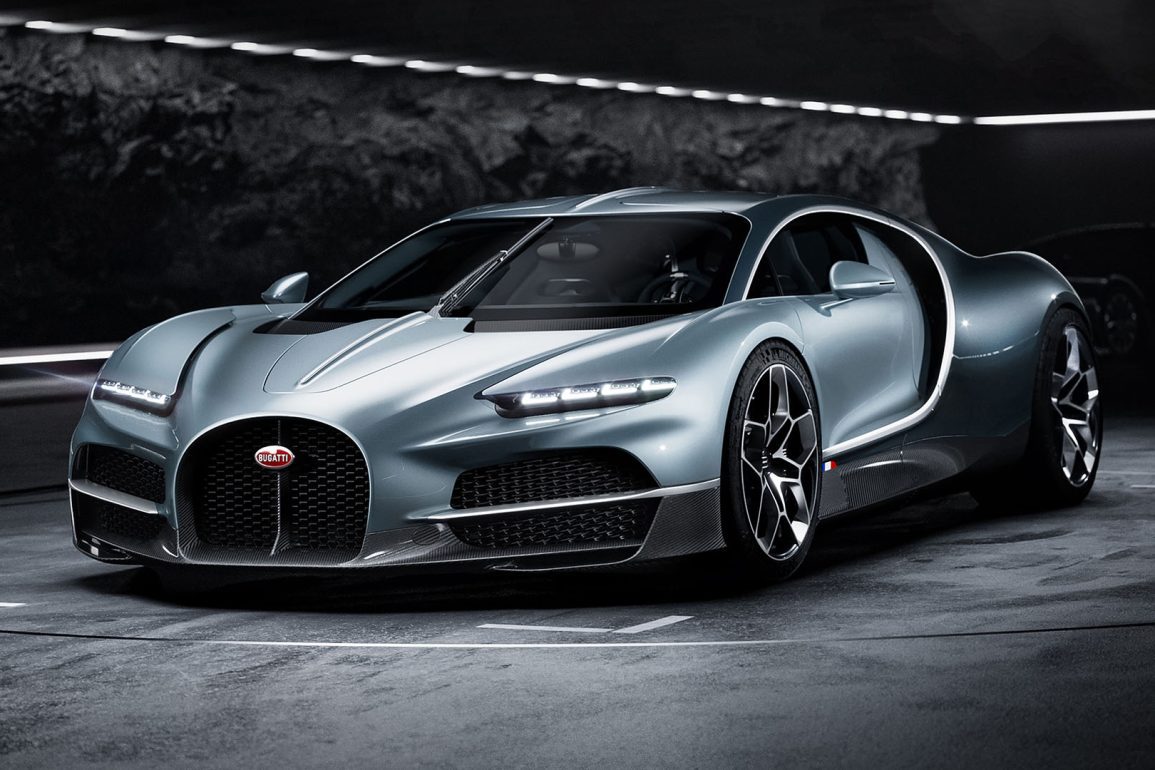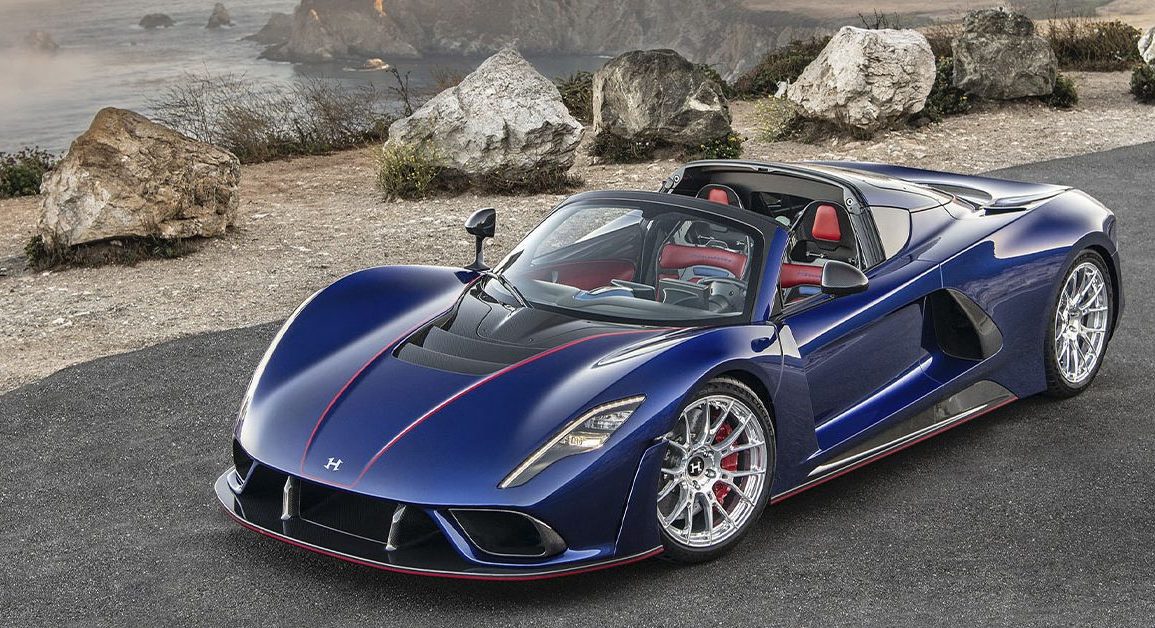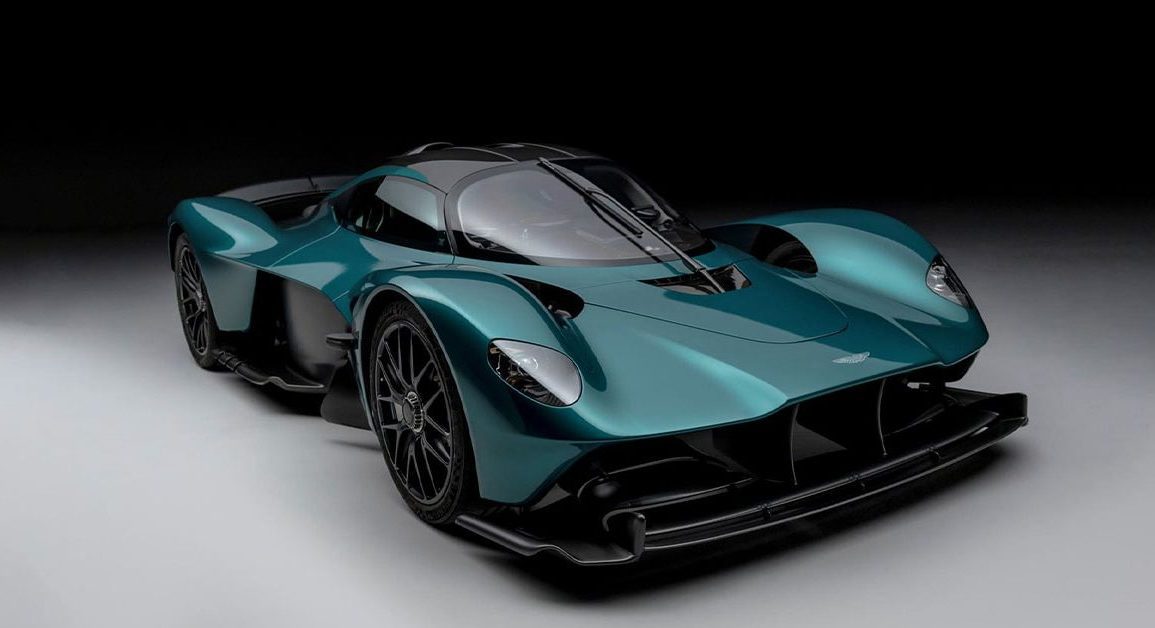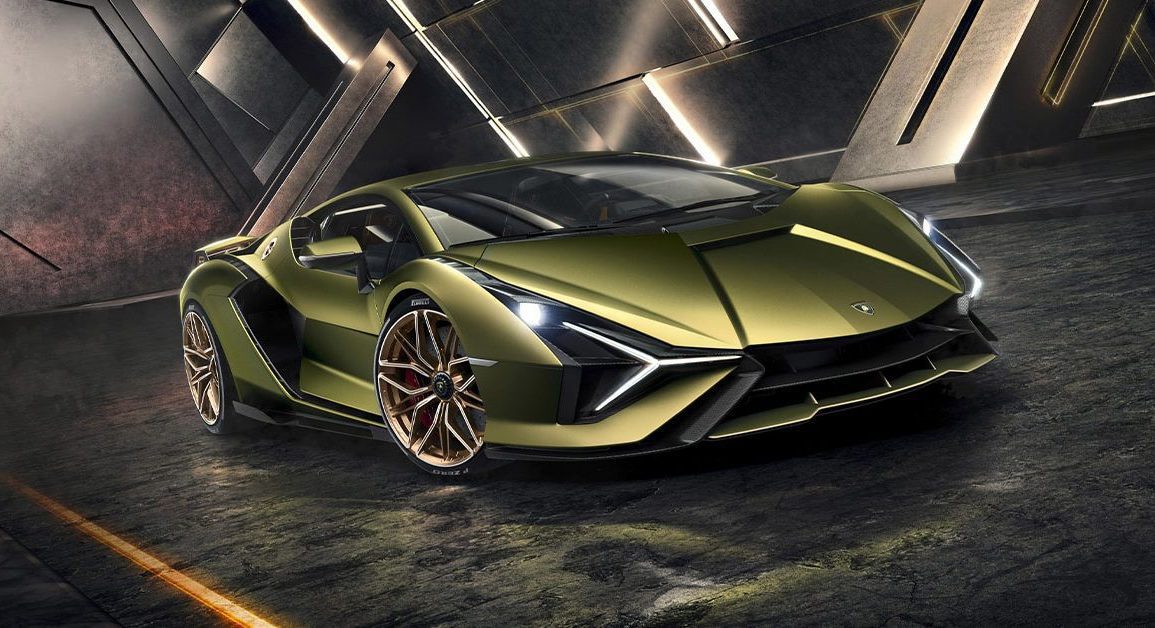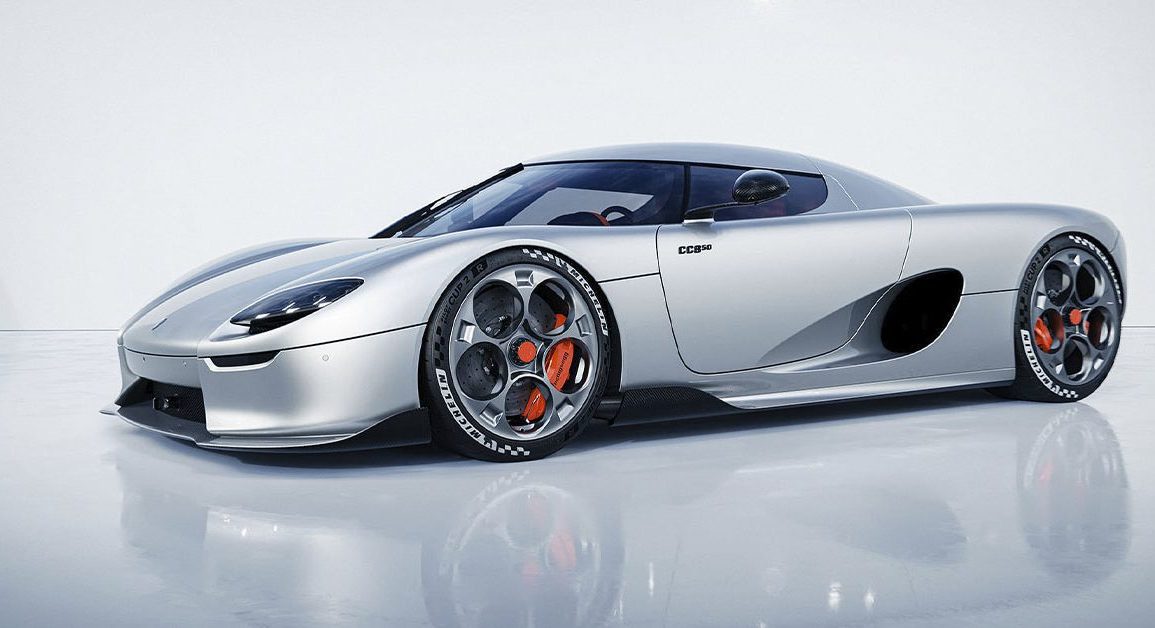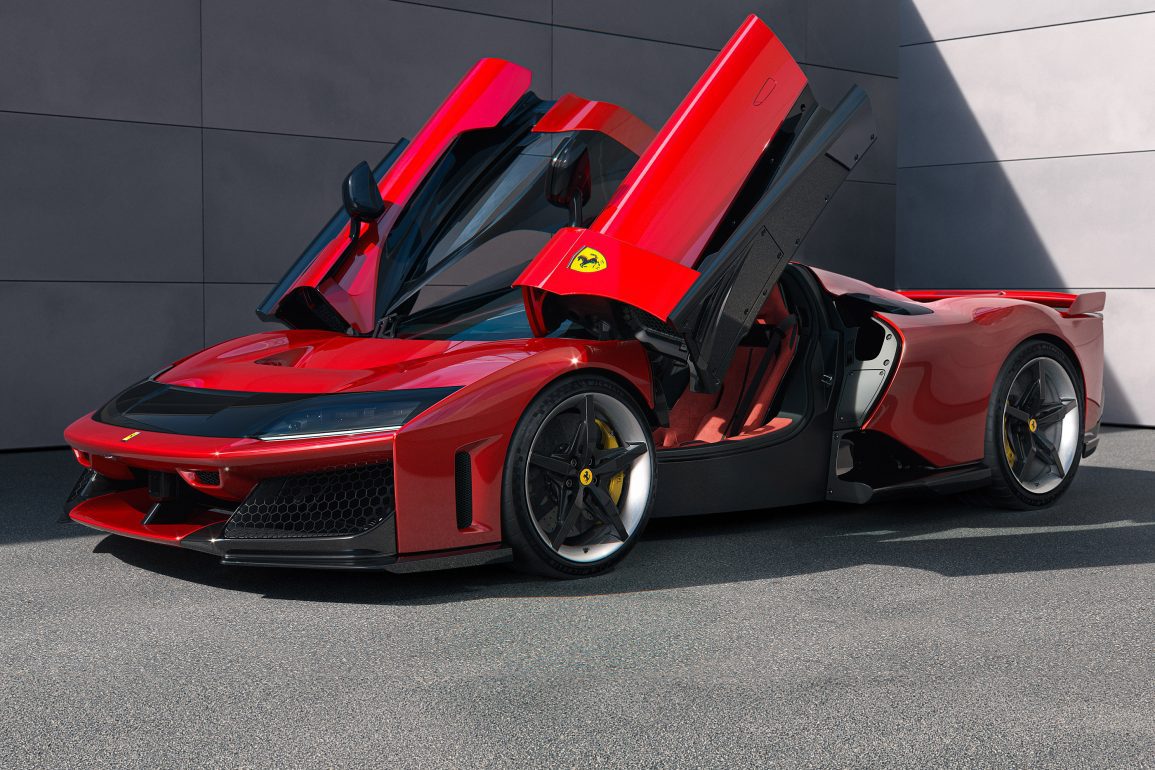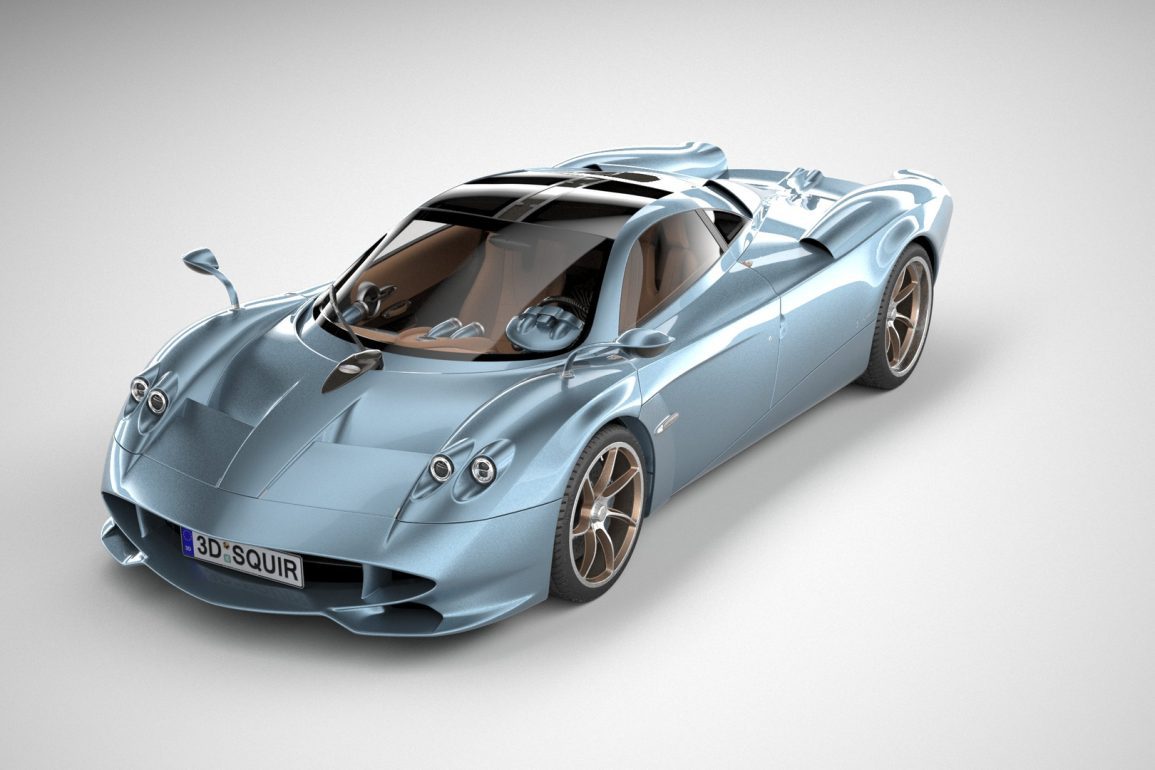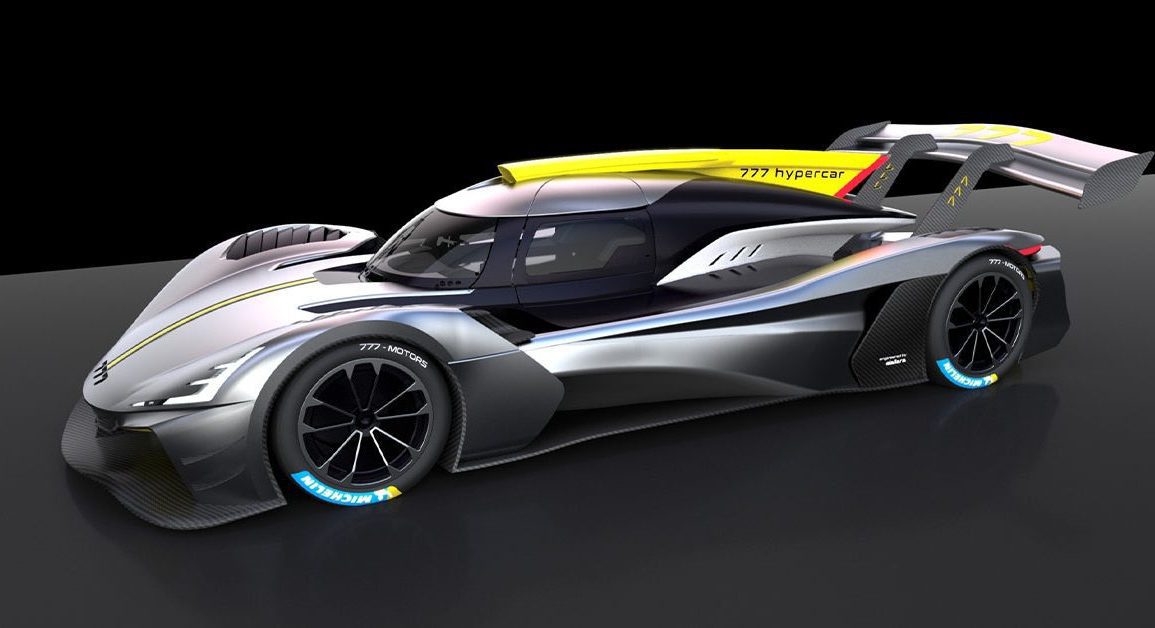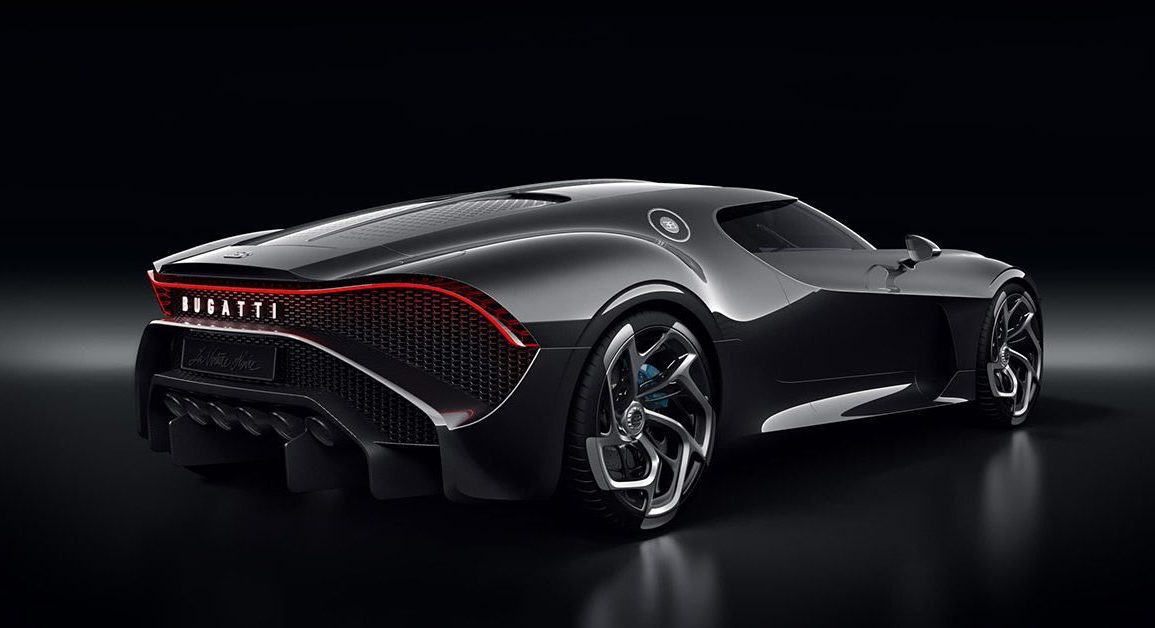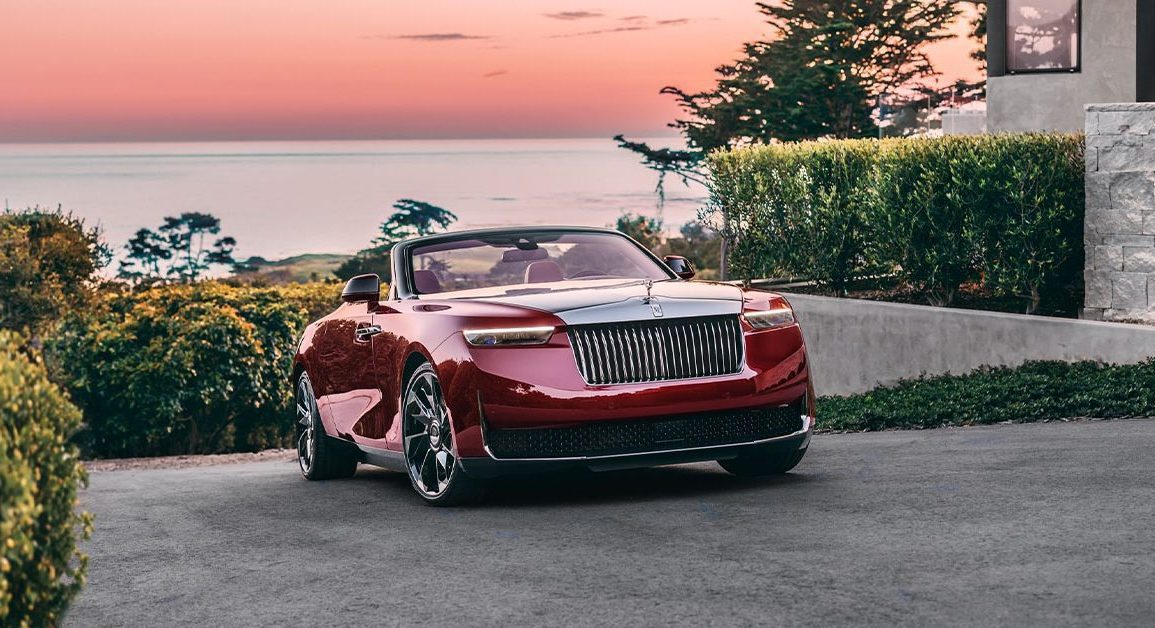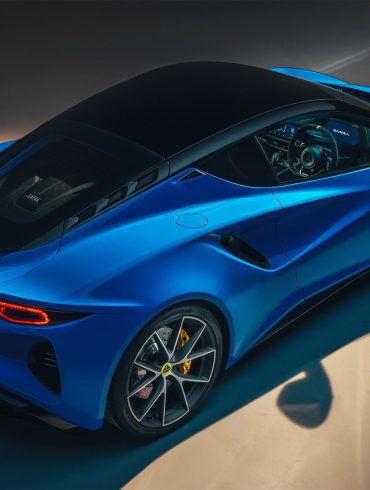The Most Expensive New Cars
If you have to ask.... the most priciest cars on sale today
Prepare to enter the realm of automotive extravagance, where price tags soar into the millions and exclusivity reigns supreme. This curated collection showcases the most expensive new cars on sale today, those rare and exquisite machines that represent the pinnacle of automotive artistry, engineering, and luxury. From limited-production hypercars with mind-bending performance to bespoke creations that redefine automotive opulence, these rolling works of art are reserved for the most discerning collectors and enthusiasts. Get ready to be amazed by their breathtaking design, their groundbreaking technology, and their ability to redefine the limits of automotive excellence.
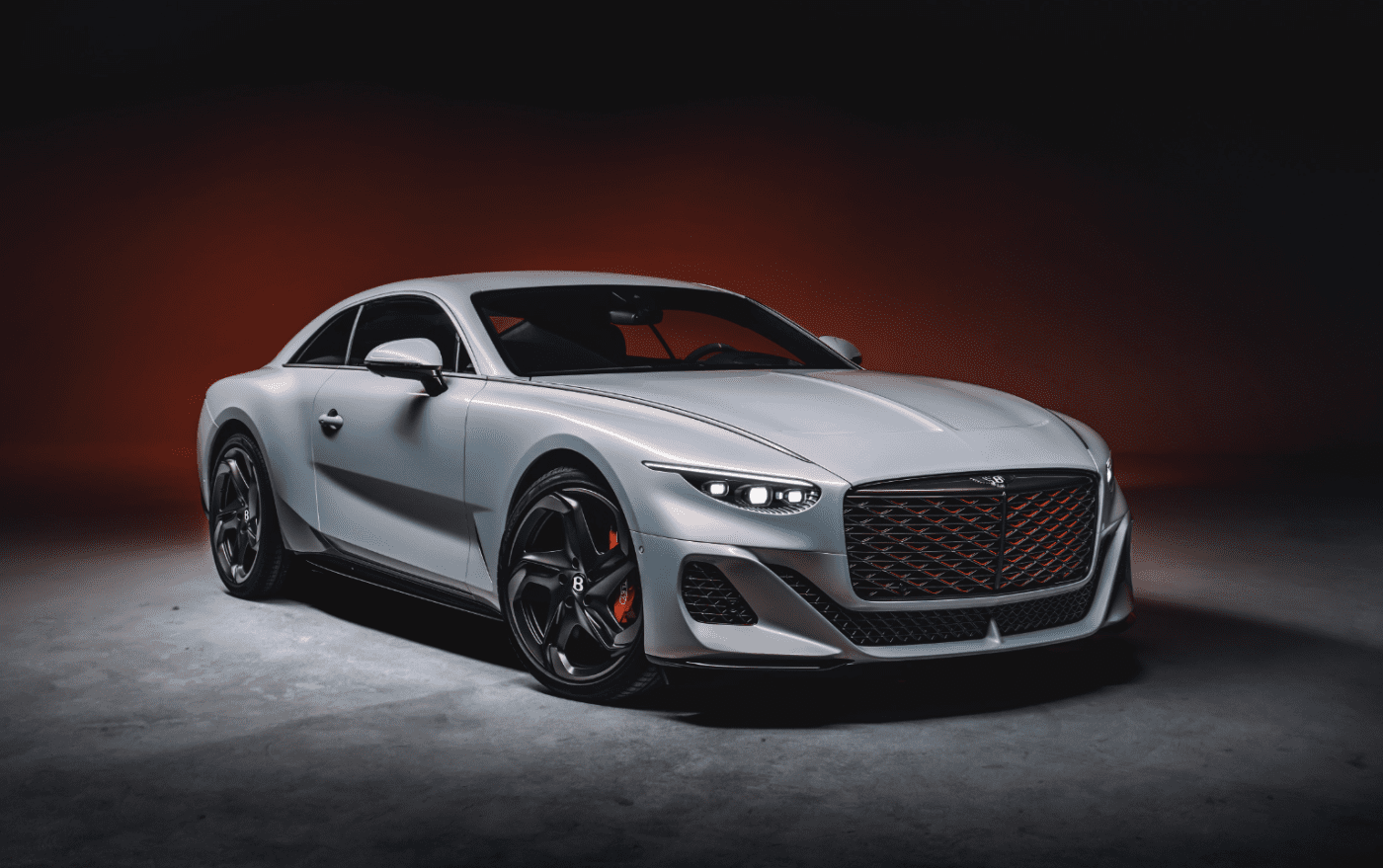
Where millions meet masterpieces, here are the priciest new rides on the planet today.
Article Quick Nav
About Our Selections
The automobile industry is exciting since car manufacturers always try to outdo each other in speed, style, and exclusivity. This has led to the production of various extremely high-priced vehicles in recent years. Some are one-off models, while others are offered in limited and exclusive production runs.
This article will examine several of the most costly vehicles on sale today and discuss what sets them apart. These vehicles represent the height of automotive luxury, from custom-builts to hybrid and all-electric hypercars with the latest and most remarkable technologies.
Ferrari, Koenigsegg, Bugatti, Rimac, Pagani, and Rolls Royce are all included. These car companies have established themselves as market leaders in the supercar and hypercar categories by offering the world's most exclusive and valuable vehicles.
We're listing the original sticker price for the cars. Therefore, you won't find auction cars or second-hand sales at exorbitant markups.
Ford GT MK IV
Unconstrained extreme performance
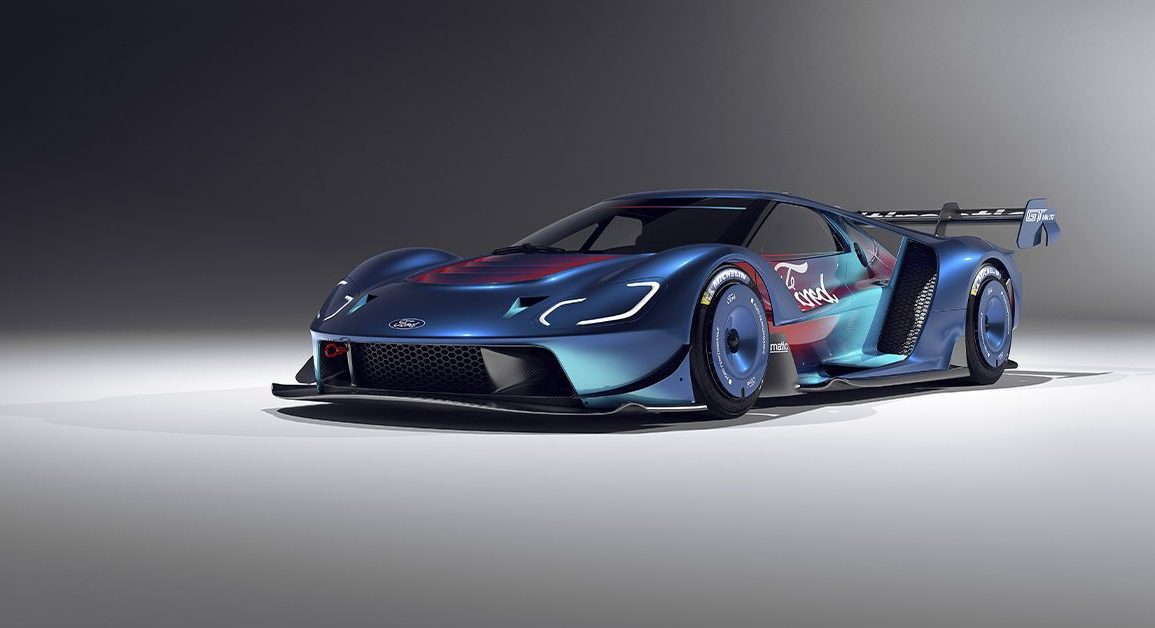
Why We Picked It:
The Ford GT is a two-door, rear-wheel-drive, mid-engined supercar designed for maximum speed and aerodynamic efficiency. Its next-generation twin-turbocharged V6 generates over 600 horsepower, making it the most powerful EcoBoost production engine ever. The 3.5-liter EcoBoost V6 engine was connected to a seven-speed dual-clutch transmission for quick gear changes and responsive handling.
Fuel efficiency and performance are both improved by the GT's extensive use of lightweight materials like carbon fiber and aluminum. The vehicle's aerodynamic efficiency actively reduces drag, which aids in downforce and stability. The optimum tear-drop shape, fuselage design reminiscent of airplanes, and curved windscreen increase downforce and improve visibility.
Aerodynamics has a role in every aspect of the GT, from the overall design to the fully active aerodynamic components that improve braking, handling, and stability. In response to the vehicle's speed and the driver's input, an active rear spoiler is automatically deployed and can adjust its height and pitch angle.
Specifications:
Price: $1,700,000
Engine: 3.5L Twin-Turbocharged V6
Power: 800 hp
Torque: 746 lb-ft
Transmission: 7-Speed Semi-Automatic
Curb Weight: N/A lbs
Highlights:
Ford plans to increase the Mk IV's power output to nearly 800 hp from the conventional car's 660 hp using an EcoBoost V6 engine.
If the standard GT with 660 hp takes about three seconds from zero to sixty, then the Mk IV must be even quicker.
Learn More:
Hispano Suiza Carmen Boulogne
A Spanish 1,100-hp electric hypercar
Why We Picked It:
The Spanish luxury and competitive automobile manufacturer Hispano Suiza produces the Carmen Boulogne, a road-legal race car. The interior's evident handmade craftsmanship continues the brand's heritage. The inside is exquisite and sumptuous, including cutting-edge technology and modern design elements.
Designed to commemorate Hispano Suiza's success in the Georges Boillot Cup race held in Boulogne, France. Thanks to its carbon fiber bodywork, copper accents, and state-of-the-art electronics, it's a rolling work of art.
An 80-kWh, 700-volt battery pack specific to the vehicle powers four AC motors at the rear axle. Two motors connected to a single-speed gear power each wheel.
The t-shaped battery pack is a stabilizer and tuned mass damper (TMD). The base capacity of the lithium-ion polymer battery pack is 80 kWh, with simple modifications available to augment this. While Carmen's rear wheels aren't physically connected, a software-based "virtual differential" nonetheless allows for the transfer and distribution of torque between them.
Specifications:
Price: $1,900,000
Engine: 4 AC Motors
Power: 1,100 hp
Torque: 1,180 lb-ft
Transmission: Single-Speed Automatic
Curb Weight: 3,593 lbs
Highlights:
The steering-wheel paddles on the Carmen Boulogne can also select the car's adjustable regenerative braking.
The high-energy battery pack is t-shaped, running as the central spine of the car.
Learn More:
Bentley Mulliner Batur
Crewe's new jewel
Why We Picked It:
Bentley's most exclusive division created a new model and successor to the Bacalar, a luxurious Gran Turismo worth knowing. As one of the brand's flagship models, the Bentley Batur by Mulliner can satisfy even the most demanding customer requests with nearly endless customizability. More recently, the company has ventured to become a coachbuilder comparable to those in the past, producing one-of-a-kind vehicles with minimal production runs. In the case of the Batur Batur by Mulliner, only 18 cars will be produced.
In terms of mechanics, Bentley has once again turned to the renowned W12 from the top-of-the-line Continental GT and the Bacalar. With enhanced intake, upgraded turbochargers, new intercoolers, and thorough recalibration, this 6.0-liter block can produce over 740 horsepower and a maximum torque of 737 lb-ft. Based on these numbers, the Batur can now claim the title of the most powerful Bentley in history.
The brand's all-wheel-drive system and an eight-speed dual-clutch automatic transmission manage all that power. Another notable mechanical element is the titanium exhaust system, which provides a soundtrack in line with the car's performance level.
Specifications:
Price: $2,000,000
Engine: 6.0L V12
Power: 740 hp
Torque: 737 lb-ft
Transmission: 8-Speed Automatic
Curb Weight: 5,029 lbs
Highlights:
The Mulliner Batur features air suspension and Drive Dynamics Control with Sport, Bentley, Comfort, and Custom modes. This system also acts on the 48-volt active stabilizer bars.
Like every coachbuilt vehicle Mulliner builds, the Batur offers a luxury only Mulliner can provide because of an impressive display of state-of-the-art methods and components.
Learn More:
Lotus Evija Fittipaldi
A 2000-hp racing-inspired electric hypercar
Why We Picked It:
To honor the 50th anniversary of Emerson Fittipaldi and Team Lotus's Drivers' and Constructors' Championship victories in Formula One, Lotus has released a special edition of their new all-electric hypercar, the Lotus Evija Fittipaldi, which is painted in the same black and gold as their Lotus Type 72 racecar from the early 1970s. Even with all that power and performance, the Lotus Evija still puts the driver first, just like the Emerson Fittipaldi and the Type 72.
The Lotus Evija Fittipaldi's technical specs and performance numbers are incredible. Thanks to its four electric motors and 90 kWh (capacity)/2,000 kW (power) battery pack, it's the world's most powerful series production car.
The front splitter improves handling and provides additional cooling for the powertrain. Gavan Kershaw and his team at Lotus, where he serves as Vehicle Attributes Director, were in charge of the Evija's driving dynamics. Torque vectoring helps the Evija produce 1252 lb-ft of torque.
Specifications:
Price: $2,000,000
Engine: Four Electric Motors
Battery: 90 kWh (capacity)/2,000 kW (power)
Power: 1,972 hp
Torque: 1,253 lb-ft
Transmission: Sing-Speed Automatic
Curb Weight: 3,766 lbs
Highlights:
The Evija is the first Lotus road car with a one-piece carbon fiber monocoque chassis. Hence, from its fully adjustable race-style seats to the multi-function steering wheel.
The Lotus Evija does 0 to 62 mph is 2.9 seconds. The top speed is capped at 217 mph.
Learn More:
Ferrari Daytona SP3
A brutal Icona from Maranello
Why We Picked It:
The Ferrari Daytona SP3 boasts a ton of incredible features. The Ferrari Monza SP1 and SP2 were legendary racers from the middle of the past century, and the SP3 continues that tradition.
Ferrari installed the most potent (all-combustion) engine ever produced in the SP3. We are referring to the 812 Competizione's magnificent 6.5L naturally aspirated V12 engine, which is positioned in the middle. It must create more power than the latter, and improvements like titanium connecting rods and a redesigned direct injection fueling system enable the SP3 to generate 829 horsepower instead of the 812 Competizione's meager 819 horsepower.
The Daytona SP3 also kept its extraordinarily smooth 9,500 rpm redline. Power to the rear wheels is transferred to the engine using a 7-speed dual-clutch transmission.
The Ferrari Daytona SP3 has a monocoque chassis made with the most cutting-edge and lightweight materials available for a street-legal road car, combined with the most recent developments in Formula One technology.
Specifications:
Price: $2,200,000
Engine: 6.5L V12
Power: 829 hp
Torque: 514 lb-ft
Transmission: 7-Speed Automatic
Curb Weight: 3,274 lbs
Highlights:
The SP3 is the most aerodynamically efficient car Ferrari claims it has ever produced
The Ferrari Daytona SP3 can accelerate from 0-60 mph in just 2.85 seconds and has top speed of 211 mph.
Learn More:
Pininfarina Battista
The first fully electric hypercar
Why We Picked It:
Pininfarina faced stiff competition from other Italian automakers when it set out to design one of the world's quickest automobiles. Still, they pulled it off with the Battista.
Still, being at the top in terms of performance is not always the most important thing. What makes the Pininfarina Battista special is that it's fully electric. The production Battista launched in 2022 received a facelift compared to the prototype shown in 2019. The changes are subtle but more numerous than you might think. For instance, they nixed the thin air intake that joined the two headlights below the badge.
The Battista's four electric motors (one for each wheel) and carbon fiber monocoque chassis make it remarkably lightweight. There are 1,926 horsepower and 1,429 lb-ft of torque available from this vehicle.
The T-shaped 120 kWh battery pack has 6,960 lithium-ion cells, which allows for a usable capacity of 97%. Furthermore, full four-wheel torque vectoring is achievable thanks to the AC permanent-magnet electric motors installed in each wheel.
Specifications:
Price: $2,200,000
Engine: 4 Electric Motors
Battery: 120 kWh Lithium-Ion
Power: 1,926 hp
Torque: 1,429 lb-ft
Transmission: Single-Speed Direct Drive (Front / Rear)
Curb Weight: 4,550 lbs
Highlights:
The Battista accelerates from 0 to 60 mph in less than 2 seconds, reaching 186 mph in 12 seconds.
Thanks to a Rimac 120 kWh battery, it also boasts a range of about 280 miles.
Learn More:
McLaren W1
The successor to the P1. It has big shoes to fill.
Why We Picked It:
The McLaren W1 is the latest and greatest hypercar from the British automaker, and it's a game-changer in every sense of the word. Unveiled just recently in October 2024, it's the spiritual successor to legendary McLarens like the F1 and P1, pushing the boundaries of performance, technology, and design.
Here's a quick rundown of what makes the W1 so special:
Mind-bending performance: The W1 boasts a hybrid powertrain that combines a new twin-turbocharged V8 engine with an electric motor, producing a combined output of 1,275 PS (that's over 1,257 horsepower!). This translates to a 0-60 mph time of just 2.7 seconds and a top speed electronically limited to 220 mph.
Cutting-edge aerodynamics: The W1 is a ground-effect car, just like McLaren's Formula 1 machines. This means it uses aerodynamics to suck itself to the road, generating incredible levels of downforce and grip. It's the most aerodynamically advanced road car McLaren has ever produced.
Lightweight construction: Extensive use of carbon fiber and other lightweight materials helps keep the W1's weight down to just 1,399 kg (around 3,084 lbs). This contributes to its incredible performance and agility.
Driver-focused cockpit: The W1's interior is designed around the driver, with a minimalist layout and all the essential controls within easy reach. The seats are integrated directly into the chassis, and the steering wheel is inspired by Formula 1 design.
Exclusive and highly sought-after: Only 399 W1s will be built, making it an extremely rare and desirable hypercar. With a price tag of $2.1 million, it's also one of the most expensive cars in the world.
Specifications:
Price: $2,100,000
Engine: 4.0L Twin-Turbo V8 + Electric
Power: 1,258 hp @ 9,000 rpm
Torque: 988 lb-ft @ 4,500 rpm
Transmission: 8-speed dual-clutch
Curb Weight: 3,084 lbs
Highlights:
An underbody designed to maximize airflow and downforce, stemming from McLaren's Formula 1 Team Active aerodynamic elements, including a front splitter and rear wing, adjustable to enhance downforce performance.
Internal wind tunnel tests showed the W1 to have a maximum total downforce of 1,000 kg (2,200 lb).
Learn More:
Gordon Murray Automotive T.50
The highest-revving car ever and spiritual successor to the mighty McLaren F1
Why We Picked It:
Gordon Murray's vast experience in aerodynamics, design, engineering, and Formula 1 racing culminates in the T.50. He was the driving force behind the McLaren F1, recognized as a true supercar and one of the greatest cars ever made.
The naturally aspirated V12 engine powering the T.50 is the lightest and highest-revving engine ever fitted in a road car. A standard six-speed manual gearbox and a modified Cosworth engine drive the rear wheels. The 4.0-liter engine has a redline of 12,100 rpm, making it the highest-revving engine ever.
In full V-Max Boost mode, the system reduces drag to a minimum. It uses the car's 48-volt starter generator to drive the fan in the back, which frees up power, allowing a swift burst of boost up to 690 horsepower for short periods of maximum acceleration. The T.50 handles and performs incredibly well.
The T.50 will be limited to only 100 cars. It's, therefore, very sought after by collectors and motor enthusiasts.
Specifications:
Price: $2,300,000
Engine: 4.0L V12
Power: 660 hp
Torque: 344 lb-ft
Transmission: 6-Speed Manual
Curb Weight: 2,174 lbs
Highlights:
The T.50 weighs just 2,174 pounds, making it one of the lightest hypercars on the market. This is due in part to its extensive use of carbon fiber.
According to Gordon Murray, the goal with the T.50 was to improve on his acclaimed McLaren F1 "in every conceivable way"
Learn More:
Rimac Nevera
A Mediterranean storm
Why We Picked It:
The Rimac Nevera is the finalized version of the 2018 concept car, the Rimac C_Two. The Nevera is a fully electric hypercar, rivaling most high-performance and exclusive cars worldwide, such as the Pininfarina Battista, the Bugatti Chiron, the NIO EP9, or the new Tesla Roadster. For those wondering where the name Nevera came from, it alludes to the Croatian term for "an unexpected and powerful Mediterranean storm."
At first glance, the Rimac Nevera is a sight to behold. However, it's even more picture-perfect if you look behind its statuesque exterior. Four electric motors that can produce 1,914 horsepower and 1,740 pound-feet of torque power the second Rimac production model. Rimac's All-Wheel Torque Vectoring 2 (R-AWTV 2) has also replaced conventional electronic stability software.
Rimac's H-shaped, liquid-cooled, lithium-magnesium-nickel battery provides 120 kWh of power. The car's range on a single charge is up to 342 miles.
Specifications:
Price: $2,400,000
Engine: Four Electric Motors
Battery: 120 kWh
Power: 1,914 hp
Torque: 1,740 lb-ft
Transmission: Single-Speed Direct Drive
Curb Weight: 5,100 lbs
Highlights:
By strategically placing a pair of 200 kW electric motors in front and another 500 kW in the rear, the engineers could give the rear-biased Nevera an ideal 48:52 (front: rear) weight distribution.
The Nevera can go from 0 to 60 mph in 1.9 seconds and reach 186 mph from a standstill in 9.3 seconds. It has a top speed of 256 mph.
Learn More:
Mercedes AMG Project One
A Formula One car for the road
Why We Picked It:
The Mercedes-AMG Project One is a road-going version of the Formula One vehicle that has assisted Lewis Hamilton in winning seven constructors' championships and six world titles since 2014. The Mercedes-AMG ONE is the most stunning, state-of-the-art, street-legal race car out of Affalterbach in its 55-year history.
The Mercedes-AMG ONE, with its E Performance hybrid hypercar technology, shows how the technology and mechanics of a modern F1 car can be applied to a street car. It equips a 1.6-liter turbocharged V6 block as its main engine. The block was constructed at Brixworth, England, which is near Northampton, by the Mercedes-AMG F1 team's engine section.
Like an F1 vehicle, the AMG One features a button-activated drag reduction system (DRS) that modifies the body's aerodynamic characteristics according to the chosen driving mode (Highway, Track, or Race).
Specifications:
Price: $2,700,000
Engine: 1.6L E-Turbo V6
Power: 1,200 hp
Torque: 737 lb-ft
Transmission: 7-Speed Auto-Manual
Curb Weight: 3,737 lbs
Highlights:
The car's body is made from carbon fiber and aluminum, making it one of the lightest cars on the market, and the interior is designed for track use, with bucket seats and a racing harness.
The company has claimed that Project One can reach speeds of over 217 mph (350 kph) flat out and accelerate from 0 to 124 mph in less than six seconds.
Learn More:
Bugatti Tourbillon
First new design since the brand merged with electric car maker Rimac.
Why We Picked It:
Under Mate Rimac's leadership, the new Bugatti was expected to employ a hybrid-electric-and-combustion powertrain with enough boost to blast the car to Mars. The Tourbillon features not the iconic W-16 that has been the heart and soul of Bugatti for some 20 years, but an all-new 8.3-liter V-16 mounted amidships combined with three electric motors totaling 1800 hp. While the new car clearly uses Bugatti's design language, there's plenty new here. Styling is subjective, but speed is not; the Tourbillon's projected numbers are extreme. The car's overall shape is strikingly unique—yet clearly Bugatti. The center spine draws from the Type 57 SC Atlantic of the 1930s, one of the most beautiful cars ever made.
Like the Chiron, the Tourbillon's power turns all four wheels, but it does so in an entirely reimagined way. The Tourbillon ditches the Chiron's quad-turbo 8.0-liter W-16 for an entirely new 8.3-liter V-16 with a cross-plane crank—the 16-cylinder equivalent of a flat-plane V-8—that spins up to 9000 rpm and is good for 986 horsepower and 664 pound-feet of torque. Cosworth helped develop the engine, which surprisingly eschews forced induction for natural aspiration. The Tourbillon's powertrain story extends beyond its high-revving internal-combustion engine. The V-16 gets a boost from a trio of electric motors: two at the front axle and another at the rear. In all, the three motors make 789 horsepower. Add the engine to the mix, and the Tourbillon powertrain packs a 1775-hp punch.
Specifications:
Price: $4,600,000
Engine: 8.3L V16 + 3 Electric Motors
Power: 1,775 hp
Torque: 1,464 lb-ft
Transmission: 8-speed DCT
Curb Weight: 4,398 lb
Highlights:
It has a weight-to-power ratio of 0.67 kg per horsepower. For comparison, a typical car has a ratio of around 10 kg per horsepower.
While Bugatti hasn't officially tested the Bolide's top speed yet, simulations suggest it can exceed 310 mph, making it one of the fastest cars ever conceived
Learn More:
Hennessey Venom F5 Roadster
A poisoning demonstration of power
Why We Picked It:
The Hennessey Venom F5 Roadster is based on the Coupe variant; the two are nearly identical mechanically. However, the open-air vehicle differs from the fixed-roof version in several ways.
The Roadster's distinctive wheels further set it apart from its coupe sibling. Forged from aluminum alloy and then milled to perfection, the lightweight wheels feature seven pairs of spokes, each resembling an elongated Hennessey 'H'.
The carbon fiber monocoque chassis features a mid-mounted version of Hennessey's famous twin-turbocharged 6.6-liter 'Fury' V8 engine, which produces an incredible 1,817 horsepower. The robust automatic single-clutch transmission sends the engine's output to the back wheels.
The hypercar's unique profile, especially its roof, stands out. In contrast to the fixed roof of the F5 Coupe, the F5 Roadster's top is now a detachable piece made of stiff carbon fiber composites. The single-piece roof is fully insulated against the elements and lined with soft Alcantara upholstery.
Specifications:
Price: $3,000,000
Engine: 6.6L V8
Power: 1,817 hp
Torque: 1,193 lb-ft
Transmission: 7-Speed Automatic
Curb Weight: 3,090 lbs
Highlights:
A new engine window made of tempered glass is available on the Venom F5 Roadster. The massive 'Fury' V8 engine is displayed in all its grandeur on this panel located in the center of the rear engine cover.
The Hennessey Venom F5 roadster goes from 0 to 60 mph in 2.6 seconds and has a top speed of 301 mph.
Learn More:
Aston Martin Valkyrie
A road-legal F1 hypercar
Why We Picked It:
Aston Martin wanted to create a hypercar that was a technological marvel and a masterpiece of design when they set out to build the Valkyrie, the brainchild of famed F1 designer Adrian Newie. Thus, in 2013, Adrian Newey, Aston Martin, and the Red Bull Formula One team collaborated to develop the Valkyrie.
The Cosworth-sourced naturally aspirated V12 engine of the Valkyrie produces 545 pound-feet of torque and 1,000 horsepower. The battery-electric system by Rimac and Integral Powertrain Ltd. delivers an additional 160 hp and 206 lb-ft of torque.
Even though the Valkyrie had several powerplant alternatives, including a twin-turbo V6, Newey chose the naturally aspirated V12 because it required less cooling. Aston Martin was after the One-77's V12, but Newey insisted on having a specially built Cosworth engine.
Cosworth initially created a three-cylinder prototype to assess the viability of the V12. The result was an impressively performing hypercar that satisfied global requirements to become a street-legal vehicle.
Specifications:
Price: $3,500,000
Engine: 6.5L V12 + AC Motor
Power: 1,160 hp
Torque: 751 lb-ft
Transmission: 7-Speed Auto-Manual
Curb Weight: 3,766 lbs
Highlights:
The Valkyrie is one of the best-handling cars ever built. It has a lightweight carbon fiber body and an advanced suspension system that gives it incredible grip and agility.
The Valkyrie is one of the fastest and most powerful cars ever built. The Valkyrie has a 0–60 mph time of just under 3 seconds and a top speed of over 200 mph.
Learn More:
Lamborghini Sián
A glimpse into Lamborghini's future
Why We Picked It:
The Lamborghini Sián is a limited-edition car with a mild hybrid powertrain and a naturally aspirated 6.5-liter V12. The combined output of the powertrain is an impressive 808 horsepower.
This hybrid system isn't exactly state-of-the-art. The vehicle's rapid responsiveness is enhanced with a 48-volt, 34-horsepower electric motor linked to the transmission. The location of the electric motor and the way it is coupled to the wheels are revolutionary, according to Lamborghini. Low-speed actions, such as backing up or parking in a garage, can be accomplished with just the help of an electric motor.
More intriguing than the tiny electric motor that Lamborghini uses is the lack of a lithium-ion battery pack. The business decided to develop a supercapacitor instead. The electric motor and supercapacitor only add up to 75 pounds in weight. The electric motor can help the engine at speeds below 80 mph, and the regenerative braking can entirely recharge the supercapacitor.
Specifications:
Price: $3,600,000
Engine: 6.5L V12 + Electric Motor
Power: 819 hp
Torque: 531 lb-ft
Transmission: 7-Speed Auto-Manual
Curb Weight: 3,530 lbs
Highlights:
According to Lamborghini, the Sián is a new super sports car for a new era, but still with the heart and soul of a Lamborghini, pushing the limits to fulfill the highest expectations.
The Lamborghini Sián can do a 0-62 mph sprint in just 2.8 seconds. The car’s top speed is over 217 mph.
Learn More:
Koenigsegg CC850
A special anniversary Koenigsegg
Why We Picked It:
To honor Christian von Koenigsegg's 50th birthday in 2022, the Swedish automaker created a retro-styled, state-of-the-art hypercar in 2022. Only 50 units of this concept, which the Koenigsegg CC8S influenced, would ever be made. The CC850 has a 5.0-liter V8 engine with two turbochargers that produce up to 1,385 horsepower. Koenigsegg's first automobile, the CC8S, was released over 20 years ago, and the CC850 is an homage to that model.
The CC850's ESS transmission is groundbreaking because it can be either a nine-speed automatic or a gated six-speed manual with a clutch pedal, depending on the driver's preference. The CC850's 5.0-liter V8 with twin turbos, like the engine in the Jesco, lacks a flywheel.
The results are evident in the numbers: 1,185 hp on regular gasoline, 1,385 hp using E85 gasoline, and a staggering 1,020 lb-ft of torque, all with a total weight of 1,385 kg. That's the same 1:1 power-to-weight ratio we saw in 2014 with the iconic ONE:1.
Specifications:
Price: $3,650,000
Engine: 5.0L Twin-Turbocharged V8
Power: 1,185 hp
Torque: 1,385 lb-ft
Transmission: 9-Spd Auto/ 6-Spd Manual
Curb Weight: 3,053 lbs
Highlights:
The CC850 innovative transmission is paired with a clutch pedal, making the ESS an adaptable, multi-ratio, 6-speed manual transmission or a super-fast, smooth-shifting 9-speed automatic.
The Koenigsegg CC850 goes from 0 to 60 mph in 2.7 seconds and has a 280 mph top speed.
Learn More:
Ferrari F80
Packing 1,200 Horsepower From A Twin-Turbo Hybrid V6
Why We Picked It:
Ferrari has revealed the F80 hypercar, which is the successor of the LaFerrari. It is the Italian marque’s most powerful road car to date with a 1,200hp hybrid V6 powertrain that combines technology from the company’s Le Mans-winning 499P, along with that of its Formula 1 cars. Priced from $3 million, the F80 will be limited to just 799 units, and it's sold out.
The F80 gets a new version of Ferrari’s 3.0-litre twin-turbo V6 engine. It can rev to 9,200rpm, and compared to the unit that powers the 296 GTB, it has been completely overhauled. Parts from the 499P Le Mans car have been added to bump power to 900hp, making it the most powerful engine Maranello has produced. Ferrari claims the unit is no heavier than the 296’s engine.
Working in conjunction with the V6 engine are three electric motors: two on the front axle and one at the rear. In a first for Ferrari, these motors are made in-house. The motors at the front make 142hp each, while the rear motor takes the form of an ‘MGU-K’ energy recovery unit. The latter is similar in design to what’s seen in Ferrari’s F1 cars and can recover as much as 95hp when braking to automatically fill power gaps. Another first for the F80 is that it is the first Ferrari to feature ‘e-turbos’, which uses F1-derived tech to reduce lag and enhance throttle response.
Together, the hybrid system sends 1,200hp to all four wheels. The company claims 0-100kph and 0-200kph times of 2.15 seconds and 5.75 seconds, respectively, which makes the F80 quicker than the McLaren W1 and the Mercedes-AMG One.
Specifications:
Price: $3,100,000
Engine: 3.0L twin-turbo V6 + 3 Electric
Power: 1,200hp
Torque: 793 lb-ft
Transmission: 8-speed dual-clutch
Curb Weight: 3,362 lbs
Highlights:
The F80 is also reasonably compact. Its size is hard to discern in photos, but the vehicle is 190.6 inches long. For comparison, a Toyota Camry is 3 inches longer.
A new Ferrari hypercar is always big news. The F40, F50, Enzo, and LaFerrari have all become hypercar icons, and the F80 continues that legacy. Expect some of its elements, like the new steering wheel, to trickle down to Ferrari models in the future.
Learn More:
Pagani Huayra Codalunga
A sixties-inspired longtail hypercar
Why We Picked It:
The Codalunga derives its name from the Italian word for "longtail," essentially the Huayra with a more extended version of its tail. In addition, the vehicle features a twin-turbocharged 6.0-liter V12 capable of producing a staggering 840 horsepower and an even more remarkable 811 pound-feet of torque.
The hypercar is 240 millimeters longer than the Huayra, and its stretched-out, aerodynamic body is modeled after the racing vehicles of the 1960s, specifically the Porsche 917. The Pagani Huayra Codalunga weighs just 1,280 kilograms (2,822 pounds) due to the excellent aerodynamic efficiency that this model's form and added length provide.
The four flaps that work together to produce a changeable profile are equipped with the most advanced active aerodynamics, like most hypercars. These flaps have been around since 2011, when we saw them on the first-generation Huayra, but they have been improved to the point that they are now found on these five Codalunga models.
Specifications:
Price: $7,400,000
Engine: 6.0L V12
Power: 840 hp
Torque: 811 lb-ft
Transmission: 7-Speed Sequential
Curb Weight: 2,822 lbs
Highlights:
The Pagani Huayra Codalunga features cutting-edge forged aluminum alloy wishbones for its suspension.
The chassis comprises carbon-titanium alloy and carbon-triaxial weave composite materials.
Learn More:
777 Hypercar
A track-focused masterpiece
Why We Picked It:
Although most brands are already on the path to electrification, more competition-oriented automakers are still betting on combustion engines. One example is the newly established Italian company 777 Motors, which has recently introduced its first project as a track-oriented hypercar.
Umberto Palermo, a native of Turin, drew inspiration for the exterior design from hypercars and endurance racing cars. The aggressive aerodynamics, including the generous front splitter, the vertical fin behind the roof air intake, the gigantic rear spoiler, and the prominent diffuser, were made possible by the lack of limitations, as this vehicle is not designed to be street legal, not even to comply with any motorsport regulations.
The 777 has a monocoque chassis, a FIA-approved carbon fiber cabin, and aerodynamics and engineering on the mechanical side. A 4.5-liter naturally aspirated V8 engine powers the car. The British company Gibson Technology developed the engine, which comprises a block without any electrical assistance capable of generating 740 horsepower. The 777 hypercar, at only 900 kilos, generates up to 2,100 kilos of aerodynamic load.
Specifications:
Price: $7,400,000
Engine: 4.5L V8
Power: 740 hp
Torque: 730 lb-ft
Transmission: N/A
Curb Weight: 1,984 lbs
Highlights:
The braking system and suspension components originated in motorsports, so the 777 can boast lateral acceleration between 3.5 and 4.0G.
Sparco will supply the racing and safety equipment, while Stilo will provide the helmet.
Learn More:
Bugatti La Voiture Noire
An ode to Bugatti's virtuous past
Why We Picked It:
The Bugatti La Voiture Noire is a unique hypercar unveiled at the 2019 Geneva Motor Show. It is a tribute to the legendary Bugatti Type 57 SC Atlantic, and it is also the most expensive new car ever sold, with a price tag of $16.5 million.
The same quad-turbocharged W16 engine that powers the Bugatti Chiron Super Sport 300+ also powers the La Voiture Noire. This engine produces 1,500 horsepower and 1,180 lb-ft of torque.
The La Voiture Noire features a unique carbon fiber body that the Type 57 SC Atlantic inspires. The front grille is wider than on the Chiron, and the headlights are more slender. The car's rear end is also completely different, with a long tail and six exhaust pipes.
The seats are trimmed in high-quality leather, and the dashboard is made of carbon fiber and aluminum. The car also features several unique details, such as a steering wheel made of wood and leather and a clock that the Type 57 SC Atlantic inspires.
Specifications:
Price: $16,500,000
Engine: 8.0L Quad-Turbocharged W16
Power: 1,500 hp
Torque: 1,180 lb-ft
Transmission: 7-Speed Automatic
Curb Weight: 4,409 lbs
Highlights:
Bugatti La Voiture Noire has some fantastic details, like the headlights consisting of 25 individually milled lights, and the front grille comprises 3D-printed cells that had to be honed and examined to perfection.
La Voiture Noire has a top speed of over 260 mph and a 0–60 mph time of under 2.5 seconds.
Learn More:
Rolls-Royce La Rose Noire Droptail
A dark and dramatic roadster
Why We Picked It:
The Rolls-Royce La Rose Noire Droptail is a one-of-a-kind coachbuilt car that a private client commissioned. It is based on the Rolls-Royce Phantom Drophead Coupé but has several unique design elements and features.
The La Rose Noire Droptail is named after the Black Baccara rose, the client's mother's favorite flower. The car is painted deep black, inspired by the rose, and the interior is trimmed in black leather and rosewood.
The La Rose Noire Droptail features several unique design elements, such as a long tail, a unique grille, and bespoke wheels. The car has several unique features, such as a starlight headliner with a rose motif and a picnic set in the trunk.
The Rolls-Royce La Rose Noire Droptail is a truly unique and special car. It is a testament to the craftsmanship and expertise of Rolls-Royce, and it is sure to be a prized possession for the lucky owner.
Specifications:
Price: $32,000,000
Engine: 6.75L Twin-Turbocharged V12
Power: 593 hp
Torque: 620 lb-ft
Transmission: 8-Speed Automatic
Curb Weight: 5,511 lbs
Highlights:
Inside, 1,603 black wood veneer triangles were used to form it, and the image depicts falling rose petals abstractly.
With La Rose Noire Droptail, the roadster is making a comeback. Unlike previous Rolls-Royces, this one only has room for two passengers within the luxurious cabin.



